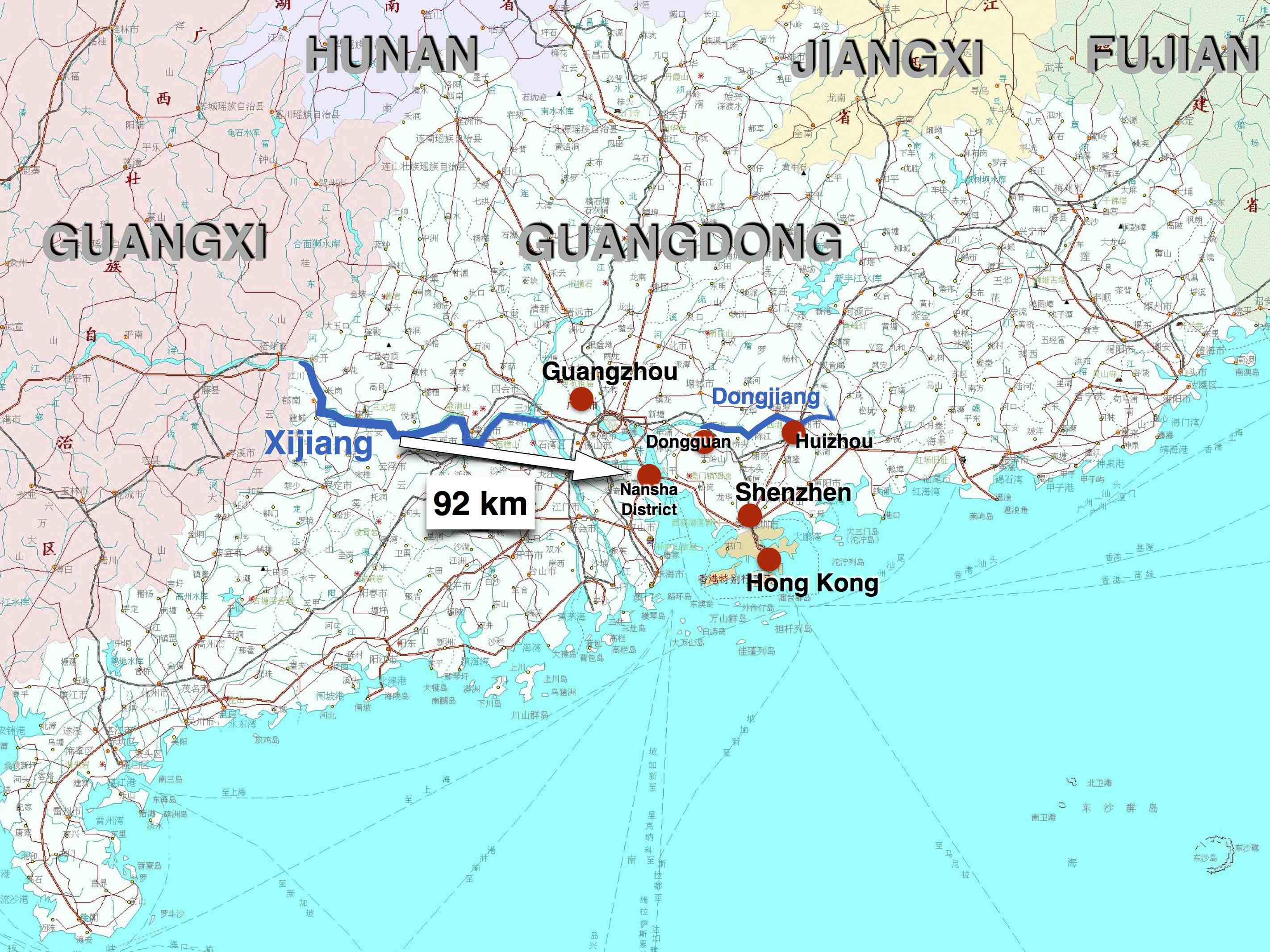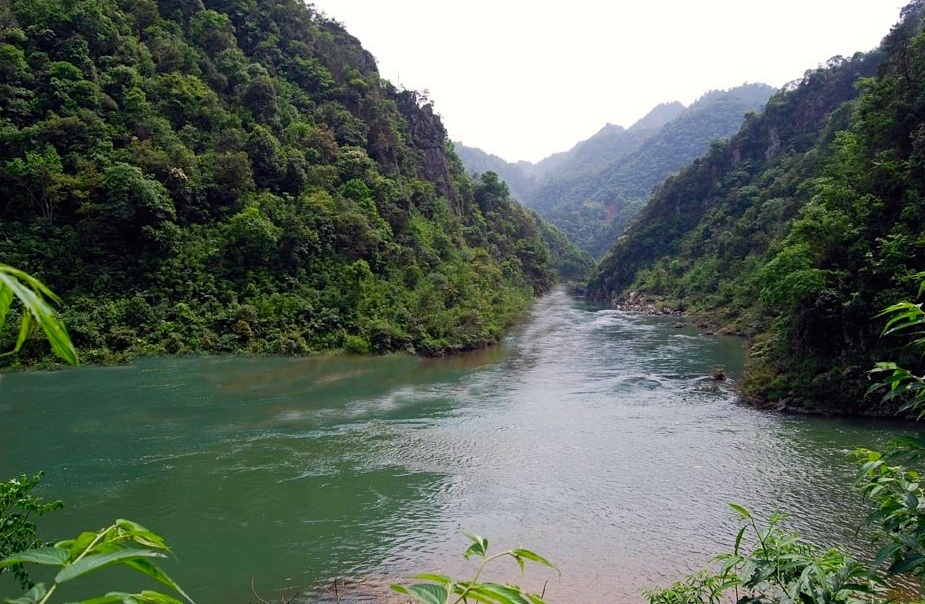Clean water is, as odors rising from the murky depths of the Pearl River suggest, difficult to come by in South China. Although there are hundreds of tiny streams and brooks in the Pearl River Delta (230 in Guangzhou alone), most are heavily polluted, meaning the city has to look elsewhere for H2O that’s actually drinkable.
This week, Guangdong officials announced details of the Pearl River Water Resources Allocation Xijiang River Project, which aims to transport water from the west arm of the Pearl River (the West River, or Xijiang) to Nansha District, located more than 92 kilometers away. Laying the infrastructure for the large-scale diversion scheme is expected to take at least five years and will cost a whopping RMB34.6 billion (USD5.2 billion).

The project will also offer a backup source for neighboring cities Dongguan and Shenzhen, which currently compete for water from the East River (Dongjiang), as does Hong Kong.
Diverting large amounts of water halfway across the province is not cheap, however, nor is it energy efficient. Transporting water requires power, but as coal-fired power production (still the largest source of energy in Guangdong) increases, so does pollution, which is why some cities like Shenzhen have started shifting their focus away from moving water and towards recycling the resource locally instead.
Shenzhen currently leads the nation in water recycling, with nearly 60 percent of its water processed for reuse (the China-wide average is closer to 10 percent, according to data from China Water Risk).
READ MORE: Dark Waters: A Thirsty Shenzhen
Another problem with taking water from distant regions is that, as neighboring provinces such as Guangxi or Hunan continue to develop, increasing factory runoff may affect the quality of water downstream in Guangdong.
Right now, the West River consistently tests at Level II out of five (with Level V being the worst quality), and is considered a safe source for drinking water. That’s good news for Guangzhouers, who sip the west waters daily (though probably without knowing it).
The Pearl River, on the other hand – which sourced all of Guangzhou’s drinking water until 2004 – is classified as Level V, meaning it is now severely polluted.
Curious about the cleanliness of waterways near you? The Guangzhou government publishes monthly test results in Chinese on www.gzwater.gov.cn. To be safe though, it’s probably best to limit your swimming escapades to a well-chlorinated pool… unless you’re ready to sport some nasty rashes.
[Cover image via kaiwind.com]






















0 User Comments